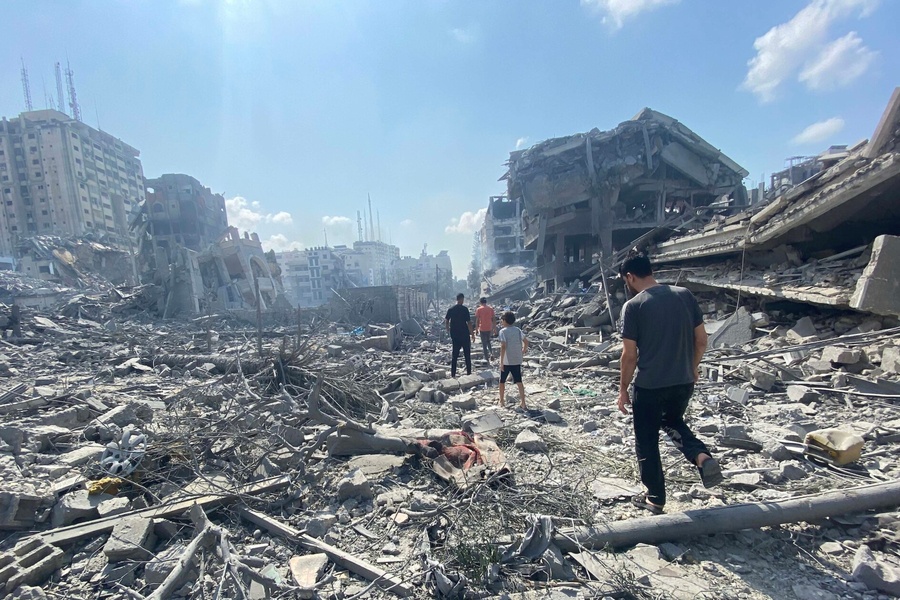Colombia's Brexit Vote
In a shocking vote, almost 13 million Colombians headed to the polls this past Sunday and rejected the government’s peace agreement with the FARC by a slim majority. The agreement—which was hammered out in Havana over four years—was generally expected to pass and herald an end to Western Hemisphere’s longest conflict.
Published by The Lawfare Institute
in Cooperation With

In a shocking vote, almost 13 million Colombians headed to the polls this past Sunday and rejected the government’s peace agreement with the FARC by a slim majority. The agreement—which was hammered out in Havana over four years—was generally expected to pass and herald an end to Western Hemisphere’s longest conflict. Only a few days earlier, President Juan Manuel Santos and FARC head Rodrigo Londoño, joined by global leaders including Secretary John Kerry, had donned white shirts, signed the agreement with pens modeled from recycled bullets, and celebrated a new era of peace.
Yet voters in 2016 seem incapable of following political expectations. First, voters in Britain did the impossible and bid adieu to the European Union and now Colombians ostensibly chose war over peace. Could these votes be a foreshadowing this year’s voter predictability for the upcoming November U.S. presidential election? No predictions there. But in the meantime, here are three points from Colombia’s plebiscite that we would be wise to remember when it comes to any unpredictable election.
First, at best polls reflect voter preference; at worst they fail on this count and also fail at reflecting who will actually get out and vote. In Colombia, all polls in the plebiscite runup showed the “yes” vote winning with a comfortable majority. So what went wrong? One possibility is that Colombians who leaned “yes” just didn’t get out to vote—perhaps comforted by the wide poll margins that supported their positions. Less convincingly, analysts are also floating the idea that voters were swayed by political correctness, hiding their “stigmatized” support for a “no” vote from pollsters. Or perhaps it’s even simpler: the polls just weren’t that accurate or representative to begin with.
Second, external events on the voting day can sway election results. As the polling stations opened across Colombia on Sunday, torrential rain from Hurricane Matthew drenched parts of the country. Some polling stations along the coast (which had polled toward “yes”) opened late and two in the state of Chocó reported never receiving ballots because of the bad weather. It’s also possible that “yes” voters in these areas felt that their side would win regardless of their individual vote—given the high poll margins—and chose to stay dry inside their homes. Only those who felt most strongly may have braved the rough conditions to make their voice heard, and in this case that might have been more of the “no” voters.
Third, even if the polls lean your way, it never hurts to have a solid contingency plan. President Santos was frank that he didn’t have a Plan B for a “no” vote, even while he and his team outlined meticulous plans for what a “yes” vote would mean. In a sense, this is completely understandable; Santos was trying to link “no” in voters’ minds with “going back to war,” and the “yes” vote with change, so officials spent their time articulating what the new policies and programs would look like. Yet, without a fixed plan for what would come after a “no” vote, officials were left scrambling as voters rejected the agreement.
This uncertainty will play out over the next few weeks and months, as Colombia’s government officials meet with opposition leaders and the FARC negotiators and sketch out next steps. But there are a few reasons to be hopeful. First, the government and the FARC have both affirmed their commitment to maintain the bilateral ceasefire. Second, both actors have likely gone too far to return to the previous wartime status quo: President Santos has staked his political legacy on the peace deal, thousands of FARC fighters have now imagined a different, peaceful future, and in the four years of negotiations, the two sides built trust and worked through the thorniest issues.
Yet Colombia’s vote against peace should stand as a stark reminder that any time we put an issue or a person to a vote, the straightforward or predicted outcome is far from assured. There are a whole host of explanations for what went wrong in Colombia, some covered above and some having to do with the more unpopular elements of the agreement or the way it was negotiated. Figuring out what happened will be critically important, not only for keeping Colombia’s peace process moving forward but also for helping make sense of one of this year’s wildly unexpected electoral outcomes.




-(1).png?sfvrsn=fc10bb5f_5)
